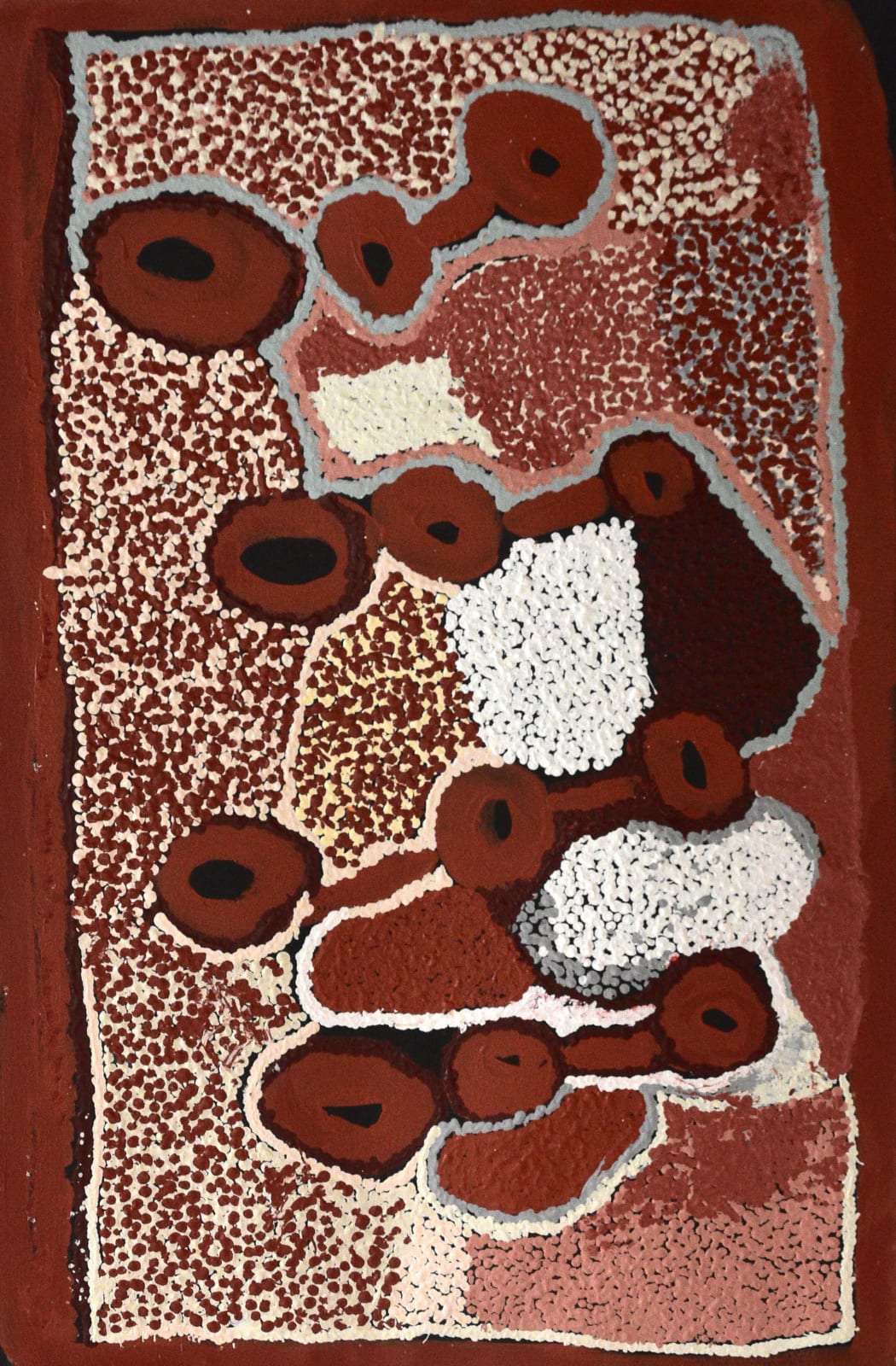Kumpaya Girgiba Australian, Manyjilyjarra , b. 1932
Pintu- Pintu, 2022
acrylic on canvas
61 x 91 cm
22-536
'We were at Pintu-pintu when all ofa sudden we heard a rumbling noise like an earthquake. When I heard that noise, I set the little one down [her children] and...
"We were at Pintu-pintu when all ofa sudden we heard a rumbling noise like an earthquake. When I heard that noise, I set the little one down [her children] and saw for the first time a grader and there was a Toyota in the front. That whitefella [Len Beadelll had fruit, flour and tucker... He gave all the little kids fruit — apple, orange, tomato, Plum, a whole sheep. The kids made the biggest waru (fire) for the fruit and cooked it. When they came back from playing games, they tried to take the fruit out of the fire because it should be cooked and [it] was all soggy and it had cooked away to nothing, there was nothing there to eat. That's when they got picked up. "
- Kumpaya Girgirba (Girgaba), as translated by Ngalangka Nola Taylor.
Pintu-pintu is a rockhole located south east of Parnngurr Aboriginal community and within in the Mckay Range region. As Kumpaya here describes, this site is especially significant to her as the location where she first had direct contact with a whitefella, Len Beadell. He was surveying a testing range for an intercontinental ballistic missile called the Blue Streak, and graded a road from Woomera, in South Australia, to the Percival Lakes. In the process he encountered some of the last Martu still living in the desert. For them, the sight of Beadell's bulldozers and graders churning up the Country evoked a frightening scene. Soon after this meeting she was picked up with her husband and children and another twenty or so Martu at nearby Parnngurr Rockhole by the Native Welfare Department. From there they were taken to Jigalong Mission. Collectively the group had come to the decision to move to the mission as a result of an extended drought, which had caused a scarcity in food and water resources. They also wanted to join their families, who had already moved to Jigalong.
- Kumpaya Girgirba (Girgaba), as translated by Ngalangka Nola Taylor.
Pintu-pintu is a rockhole located south east of Parnngurr Aboriginal community and within in the Mckay Range region. As Kumpaya here describes, this site is especially significant to her as the location where she first had direct contact with a whitefella, Len Beadell. He was surveying a testing range for an intercontinental ballistic missile called the Blue Streak, and graded a road from Woomera, in South Australia, to the Percival Lakes. In the process he encountered some of the last Martu still living in the desert. For them, the sight of Beadell's bulldozers and graders churning up the Country evoked a frightening scene. Soon after this meeting she was picked up with her husband and children and another twenty or so Martu at nearby Parnngurr Rockhole by the Native Welfare Department. From there they were taken to Jigalong Mission. Collectively the group had come to the decision to move to the mission as a result of an extended drought, which had caused a scarcity in food and water resources. They also wanted to join their families, who had already moved to Jigalong.
